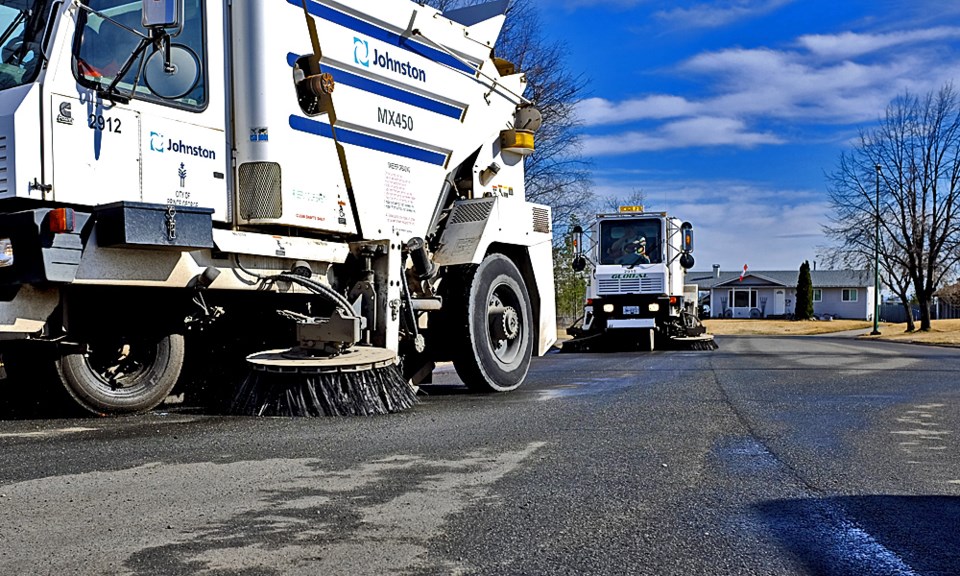There’s a lot of dirt and rocks on the roads left over from winter and the city is getting ready to sweep the streets.
Each winter, approximately 15,000 to 20,000 tonnes of sand and fractured rock is deposited on Prince George’s streets and sidewalks by city crews to provide traction on icy surfaces.
In the spring, all of that sand and material can become dust and negatively affect air quality. Consequently, about 550km of paved roadway, 150km of sidewalks, and over 24 square km of medians must be swept.
The city says they begin sweeping operations as soon as conditions permit, which is usually early to mid-April.
Since snow melt occurs faster in the bowl area than higher elevations in the city, major arterial, and collector roads in the bowl receive the first stage of sweeping operations.
The city says crews are currently flushing sidewalks and medians, and expect sweeping operations to begin on schedule in April and take several weeks to complete depending upon weather factors.
Once sweeping operations are complete, downtown streets will be swept regularly and maintenance sweeping and flushing will occur as required around the city through the fall.
The sand, fractured rock and other materials that are swept up are stockpiled by the city and then later hauled to the Foothills Landfill to be used as covering.
Once city roads, medians and streets have been swept and flushed, the city begins line painting. Crews have to wait until to paint lines and traffic control markings until the temperature of the asphalt is 10 C and above in order for the paint to adhere to the pavement.
Rain can also affect the timeliness of road line painting. However, the aim is to complete the painting of road lines by early summer but if a section of road is scheduled to be repaved the city will just want to repaint it until the repaving is finished.
The road paint also wears out faster, because in 2009 Environment Canada restricted certain volatile organic compounds (VOCs) that made roadway paint last longer.
The city hasn’t found a roadway paint product that performs as well and is capable of lasting multiple years as those paints that had high VOC content.
To learn more about the city’s road operations, you can check out the city’s website.


